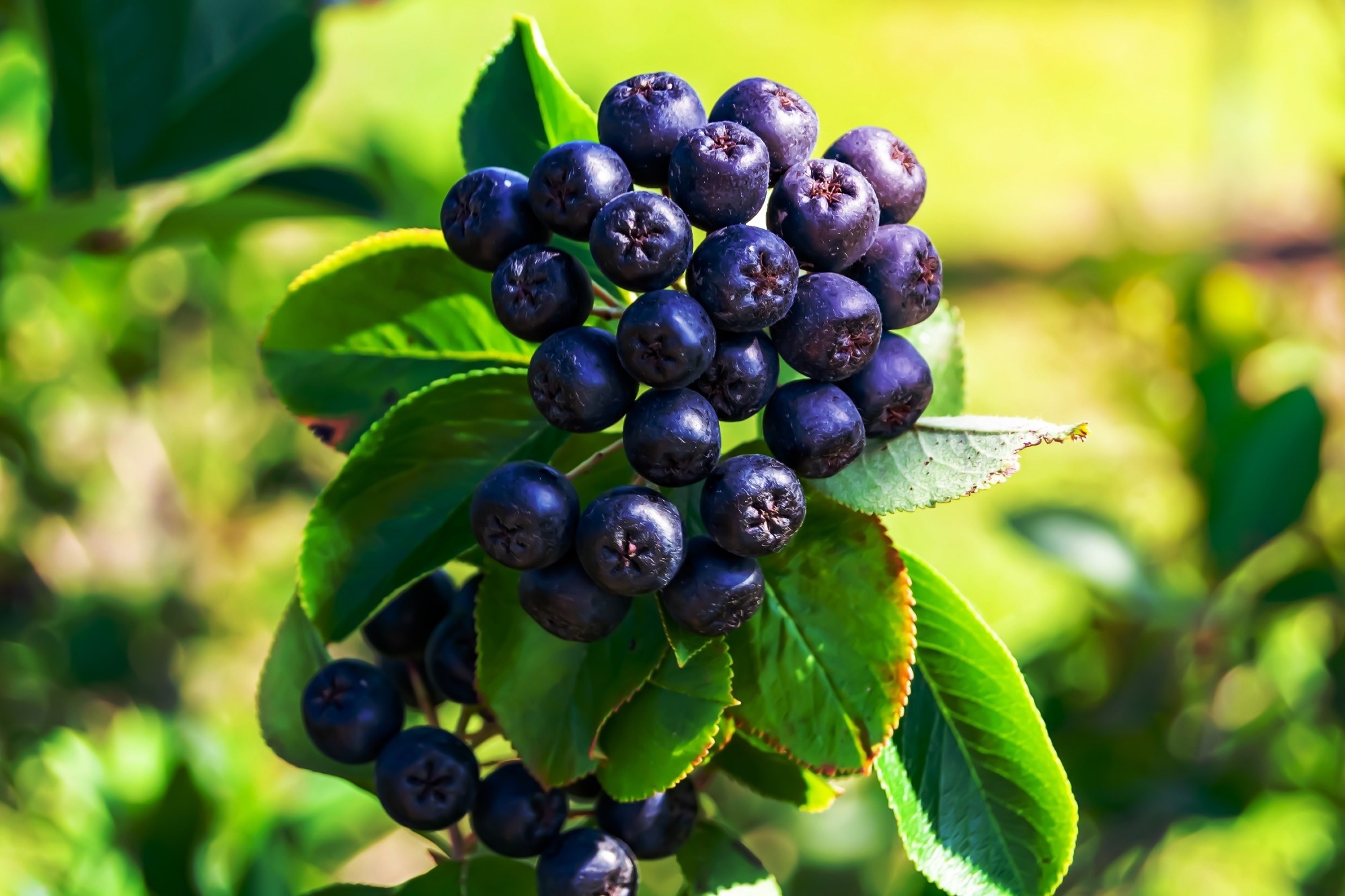In a recent study published in the journal Nutrients, a group of researchers evaluated and compared the effectiveness of fermented versus non-fermented Aronia melanocarpa berries (Black Chokeberry) on glycemic markers in Type 2 Diabetes Mellitus (T2DM) patients.
 Study: Aronia in the Type 2 Diabetes Treatment Regimen. Image Credit: ulianiculaie / Shutterstock
Study: Aronia in the Type 2 Diabetes Treatment Regimen. Image Credit: ulianiculaie / Shutterstock
Background
Aronia melanocarpa, a low-maintenance garden shrub, produces berries rich in anthocyanins, which have been linked to potential treatments for T2DM. Past clinical studies on T2DM patients using aronia were neither randomized nor blinded, and while some results indicated significant reductions in Low-Density Lipoprotein (LDL) cholesterol and fasting blood glucose levels, others did not. The antioxidant capacity of aronia berries, attributed to their polyphenol content, is noteworthy. Despite its high antioxidant potential in vitro, the clinical relevance of aronia in humans is uncertain; while it may aid T2DM through enzyme regulation, such as inhibiting α-glucosidase and enhancing insulin sensitivity, the low absorption of its polyphenols hinders their effectiveness, a challenge fermentation could potentially address by enhancing bioavailability. Given the preliminary and inconclusive findings from non-blinded, non-randomized studies and the potential enhanced benefits of fermented aronia on T2DM, further research is needed to conclusively determine aronia's therapeutic effects on glucose metabolism and related markers in T2DM patients.
About the study
The study was a rigorous, triple-blinded, triple-crossover trial conducted at the Department of Endocrinology and Internal Medicine, Aarhus University Hospital, Denmark, from December 2020 to April 2022, with each intervention lasting eight weeks and a three-week wash-out period in between. Participants, recruited through multiple channels, including local newspapers and social media, consumed fermented aronia extract (FAE), aronia extract (AE), or a placebo taken twice daily. They were randomly assigned using Excel-based block randomization, and all interventions and measurements were coded in sealed envelopes to maintain blinding. Throughout the study, participants underwent numerous tests both before and after each intervention period, including fasting blood samples, oral glucose tolerance tests, and body measurements.
Eligible participants were those diagnosed with T2DM between 30 to 80 years old, with specific blood glucose and Hemoglobin A1c (HbA1c) parameters. Various exclusion criteria included recent changes in diabetes medication, serious health issues, substance abuse, or pregnancy plans.
Test products derived from aronia pulp were provided by Elkærholm (Egtved, Denmark), a Danish company. The products were developed into snack bars containing either fermented aronia, non-fermented aronia, or raisins and coconut oil, with placebo bars also being created. The potency of the active ingredients, specifically anthocyanins, varied depending on the fermentation process and year of harvest.
To gauge participant adherence, they returned empty product bags post-intervention for counting. Their glucose levels were assessed through an oral glucose tolerance test, and other health metrics like weight and waist circumference were also regularly measured. All blood samples were processed and stored under controlled conditions for subsequent analyses, which included assessing glucose levels, various hormones, and other relevant biomarkers.
Anticipating a 20% dropout rate, the initial goal was to recruit 23 participants, but this number was later adjusted to 36. The statistical analysis was extensive and considered the study's complex design, ensuring that all results were appropriately interpreted.
Study results
In the trial held at Aarhus University Hospital, Denmark, forty-four individuals were initially screened. However, only thirty-six of them met the criteria to be randomized for the study. Out of this group, 23 participants, comprising 15 men and 8 women, successfully completed the trial. The others were excluded due to not meeting the inclusion standards. On average, the participants were aged 67.6 years, weighed 82.0 kg, and had a median body mass index (BMI) of 26.7 kg/m2. Their average blood pressure was 141/81 mmHg, and the mean fasting blood glucose was found to be 7.7 mmol/L. The median HbA1c, a measure of blood sugar levels over three months, was 50 mmol/mol. Additionally, the men had an average waist circumference of 101.5 cm, while for women, it was 115.5 cm.
A critical aspect of the trial was ensuring that participants adhered to the given interventions. This compliance was tracked by the number of empty plastic bags they returned. According to the findings, compliance was highest for the intervention with FAE at 99%, followed by AE at 97%, and the placebo at 95%. The difference of 3% between FAE and placebo was considered statistically significant.
When analyzing anthropometric data, which concerns measurements of the human body, the interventions seemed to have a minimal impact on participants' body weight, BMI, and waist size. Across all groups, there was a slight increase in both weight and waist circumference. Specifically, after undergoing the FAE intervention, participants saw an average weight gain of 0.75 kg, a change found to be significant. Despite this, there was no notable variation in BMI throughout the study.
In terms of blood analyses, HbA1c and fructosamine were used to gauge the interventions' influence on blood glucose over the prior three months and two weeks, respectively. No discernible effects from the interventions were observed on these parameters or on fasting insulin, glucose, and glucagon after 8 weeks. Mathematical analyses, such as the Oral Glucose Tolerance Test (OGTT), Area Under the Curve (AUC), incremental Area Under the Curve (iAUC), Homeostatic Model Assessment of Insulin Resistance (HOMA-IR), and Matsuda, also failed to show any intervention-related changes in glucose or insulin resistance.
Interestingly, following the FAE intervention, a significant increase was noted in glucose-dependent insulinotropic peptide (GIP) levels, an indicator tied to glucose regulation. The FAE group showed a much more pronounced increase in GIP levels compared to the placebo group, where GIP levels decreased. However, glucagon-like-peptide-1 (GLP-1), another significant glucose-regulating factor, remained unaffected across all interventions.
In conclusion, the study showed that supplementation with either fermented or non-fermented aronia extract had no impact on waist circumference, insulin sensitivity, or fasting levels of glucose, insulin, or glucagon in individuals with T2DM.